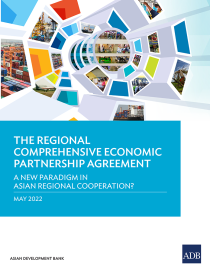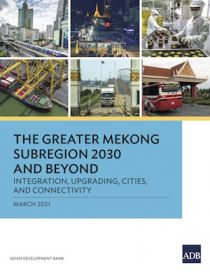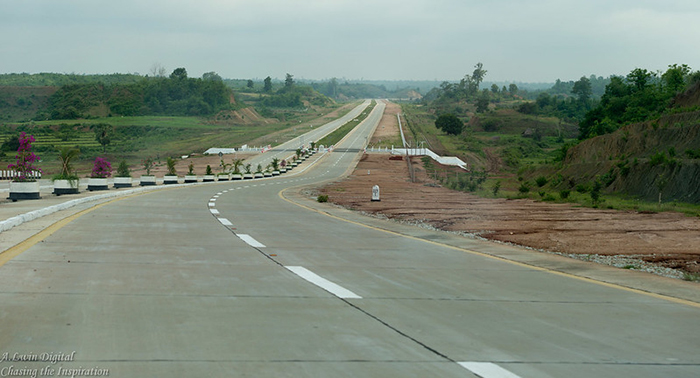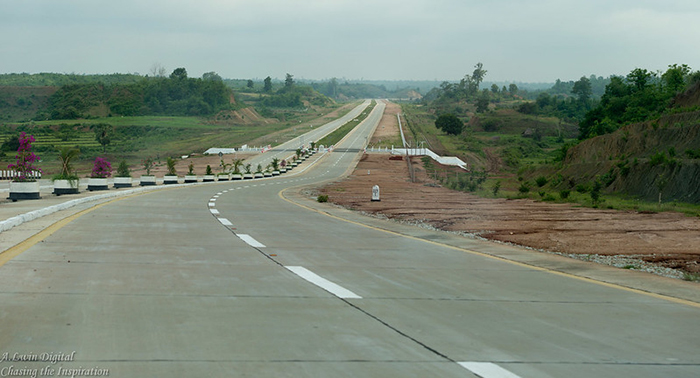
Asian Development Bank and Myanmar: Fact Sheet
ADB remains deeply concerned about recent developments in Myanmar and will continue to consult with shareholders and other stakeholders on any operations in the country.
Developing transport infrastructure in tandem with policies and procedures for crossing borders and promoting trade has been central to efforts to interconnect the Greater Mekong Subregion countries.
The Subregional Transport Forum reviews, coordinates and monitors regional transport plans and projects of GMS member countries.
Transport lies at the heart of Greater Mekong Subregion cooperation. The development of physical infrastructure, such as roads and bridges, in tandem with policies and procedures for crossing borders and developing trade along key routes, has been central to efforts to forge a truly interconnected subregion.
Physically connecting the countries of the subregion was one of the first initiatives of the GMS program when it was founded in 1992. The countries of the Greater Mekong Subregion have acknowledged that in order to cooperate in trade, tourism, and investment, and to realize the other benefits of the region, they must expand the road links and border crossings that connect them.
This is being done through the development of “economic corridors,” which are geographic areas, often along major highways, where a variety of development projects are undertaken to maximize their development benefits. This might include projects involving infrastructure, laws and regulations, market development, and the improvement of urban centers. Economic corridors bring a wide range of benefits, far beyond what single projects deliver in terms of development impact.
The three main GMS corridors—the East–West, North–South and Southern economic corridors—have improved the lives of millions of people in the Greater Mekong Subregion. These corridors are being enhanced with secondary roads that extend their benefits to nearby communities most in need, and other roads that link to strategic seaports in the subregion. The regulatory details of how people and goods can best move along these corridors are also currently being worked out.
The GMS Economic Cooperation Program Strategic Framework 2030 (GMS-2030) will prioritize intermodal approaches, facilitate cross-border transport, and seek improvement in logistics, asset management, and road safety. Given the rise in GMS economic density, and with respect to its environmental considerations, GMS-2030 aims to ensure the development of railway networks; sea, river, and dry ports; and inland waterways. Investments in airports to improve connections with the rest of Asia and the world will be essential, as will the development of secondary roads that will link to main corridors to expand the benefits to poorer communities. An effort will be made to integrate urban transport with the GMS transport network. GMS-2030 was endorsed and adopted at the 7th GMS Summit of Leaders in September 2021. It aims to provide a new setting for the development of this subregion for the next decade.
Related
• GMS Transport Sector Strategy 2030
• GMS Transport Strategy 2006–2015
Focal Persons at the Asian Development Bank
Steven Schipani
Water and Urban Development Sector Office
Sectors Group
Dee Suvimol Thanasarakij (Ms.)
Executive Director,
Mekong Tourism Coordinating Office
www.mekongtourism.org
Other Concerned Staff & Consultants
Zulfia Karimova, EAPF
Regional Cooperation and Integration Unit
Central and West Asia Department
Mark Bezuijen
Agriculture, Food, Nature, and Rural Development Sector Office
Sectors Group
Asadullah Sumbal
Regional Cooperation and Integration Unit
Southeast Asia Department
Alma Canarejo
Regional Cooperation and Integration Unit
Southeast Asia Department/GMS Secretariat
Send inquiries to GMS Secretariat.

ADB remains deeply concerned about recent developments in Myanmar and will continue to consult with shareholders and other stakeholders on any operations in the country.

This report compares the Regional Comprehensive Economic Partnership (RCEP) with other free trade agreements and suggests how policy makers can promote its successful implementation.

Meeting photo via Viet Nam Plus
The second Mekong-U.S. Partnership Ministerial Meeting held on 2 August 2021 unveiled four flagship projects under the Mekong-U.S. Partnership, and noted the 8.5 million vaccine doses and over $58 million in U.S. COVID-19 assistance to the Mekong subregion countries.

This publication provides an analysis of key challenges and opportunities for the Greater Mekong Subregion (GMS) to realize its development goals by 2030 and beyond.

The Bago-Kyaikto expressway will link to the Yangon-Mandalay highway (in picture). Photo by ALwinDigital (CC BY-NC-ND 2.0).
The Asian Development Bank (ADB) has approved a $483.8 million loan to build a 64-kilometer (km) expressway connecting the capital of Bago region and the township of Kyaikto in Mon state in Myanmar and support economic development along the Greater Mekong Subregion (GMS) East–West Economic Corridor.
The Myanmar Government unveiled plans to develop a bigger and better connected special economic zone (SEZ) located in Mon State at a virtual Myanmar-Japan Investment Dialogue held on 29 July 2020. The strategically located SEZ will connect both the Indian Ocean and Pacific Ocean, and the Thilawa SEZ in Myanmar to Viet Nam’s Da Nang SEZ via the Greater Mekong Subregion’s East-West Economic Corridor. Plans for the new SEZ also include the construction of deep-sea port facilities.

The Bago-Kyaikto expressway will link to the Yangon-Mandalay highway (in picture). Photo by ALwinDigital (CC BY-NC-ND 2.0).
Myanmar’s Union Parliament approved a proposed loan from the Asian Development Bank (ADB) worth around $483.8 million to finance construction of the Bago–Kyaikto highway. The Bago–Kyaikto highway lies along the Greater Mekong Subregion (GMS) East–West Economic Corridor (EWEC), which links Myanmar to Thailand, Lao People’s Democratic Republic, and Viet Nam, and Myanmar’s Thilawa Port in Yangon to Viet Nam’s Danang Port.
Plans are underway to connect Yangon in Myanmar with the Bago Region and Mon State through new expressways along the Greater Mekong Subregion’s (GMS) East-West Economic Corridor. The Asian Development Bank (ADB) and the Japan International Cooperation Agency (JICA) will provide financing assistance to build more efficient highways that will promote safer movement of goods and people.
This is the joint statement issued at the 23rd GMS Ministerial Conference held in Phnom Penh, Cambodia on 18 November 2019.
This report presents case studies of poverty reduction projects financed by the Asian Development Bank, including the Yunnan Integrated Road Network Development Project, which helped complete the national expressway system and constructed a highway from Kunming in the People’s Republic of China (PRC) to the Myanmar border.